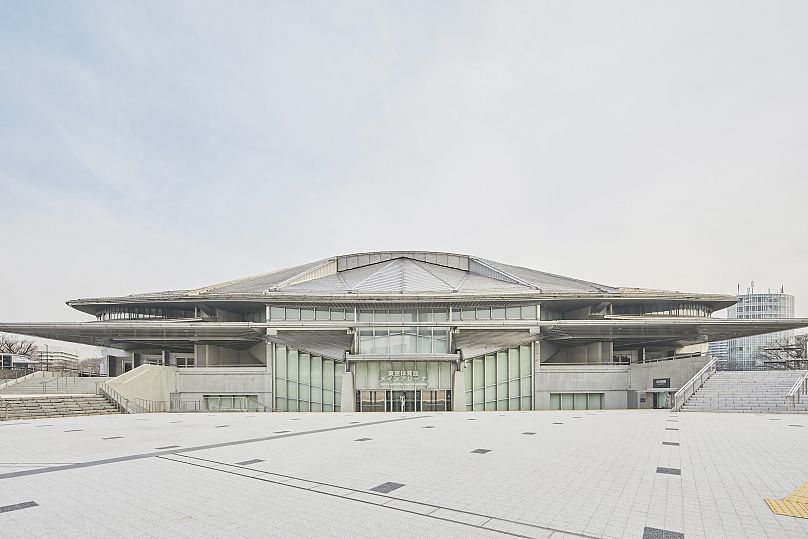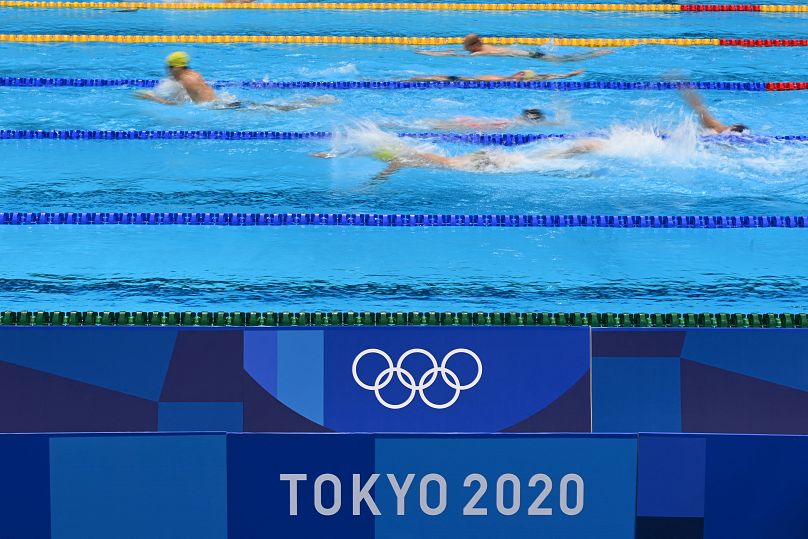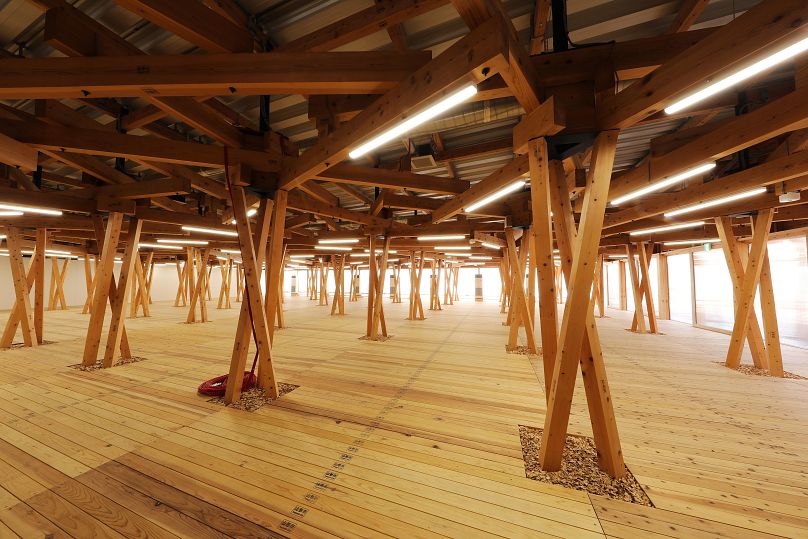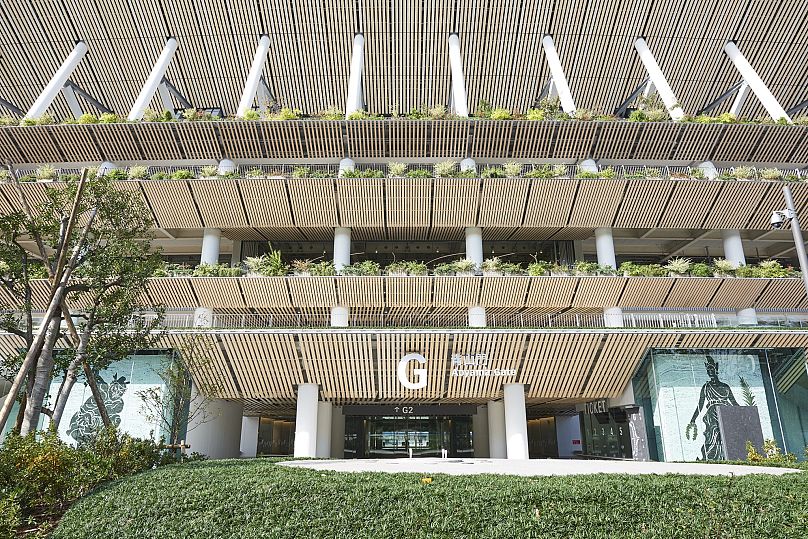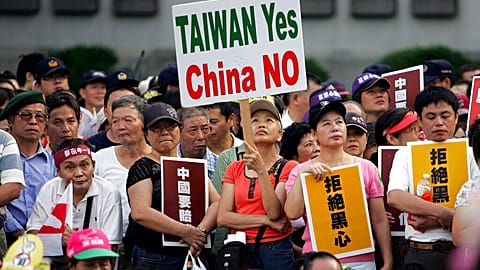‘No sport can escape’: Tackling climate change at the Tokyo Olympics
Extreme weather events such as storms and heatwaves, all affect competitors and spectators alike.
No sport can escape the impacts of a changing climate. Less snow and ice, higher temperatures, and extreme weather events such as storms and heatwaves, all affect competitors and spectators alike.
“Climate change is one of the biggest challenges humanity has ever faced, affecting sport alongside so many other human activities,” says Marie Sallois, IOC Director for Corporate and Sustainable Development.
“Sporting events must constantly adapt to the impacts of climate disruption, and the Olympic Games are no exception. As a global event with a huge visibility, the Games also carry the responsibility to take effective action to address it.”
Committed to a more sustainable future, the Olympic Movement has already taken significant steps to reduce its own footprint and contribute to a climate-friendly society. Both Olympic Games Tokyo 2020 and Beijing 2022 are aiming to be carbon neutral.
In March 2020, the IOC decided that from 2030 onwards all Olympic Games will be required to be ‘climate positive’.
This means that they will reduce their carbon emissions in line with the Paris Agreement, compensate more than 100 per cent of their remaining emissions and use their influence to drive effective climate action.
Well ahead of the 2030 target, Paris 2024 has already committed to staging the first ‘climate positive’ Games. The IOC itself is committed to becoming climate positive by 2024, and will compensate more than 100 per cent of its unavoidable emissions, mainly through the planting of an Olympic Forest.
Feeling the heat
In parallel to actively addressing climate change and compensating carbon emissions, the Games are also adapting to the effects of a changing climate.
With temperatures rising around the world including in Tokyo, organisers are keen to minimise the heat impacts on athletes to protect their health as they compete.
Among the measures taken to protect competitors, the decision was made in 2019 to move the marathon and race-walking events to Sapporo, where daytime temperatures can be up to five degrees cooler than in Tokyo.
Other events have been scheduled for earlier in the day or later in the afternoon to avoid the midday heat.
Athletes will have access to additional shaded space, and the new Olympic Stadium has been designed to let in as much wind as possible and allow the maximum circulation of air.
The venue provides natural cooling, using giant eaves inspired by traditional Japanese architecture.
The International Olympic Committee’s Medical Department has also issued a ‘Beat the Heat’ guide for competitors.
“Exercising in hot and humid conditions presents a variety of concerns, from increasing the difficulty of endurance performance to making you vulnerable to such illnesses as heat cramp, heat exhaustion and heat stroke,” it notes, addressing athletes set to compete at Tokyo 2020.
“But we don’t want this to have a negative influence on your preparation for the Games.”
Net Zero Games
Short-term adaptation, however, is no substitute for long-term climate action. As part of its bid to host the Olympic Games, one of the three pillars of Tokyo 2020’s sustainability strategy was to achieve “carbon-neutral Games by reducing energy and resource consumption and carbon emissions, using renewable energy, public transport, and low-energy vehicles, and zero-waste policies.”
Many residents are now looking to Tokyo 2020’s pledge of net zero carbon emissions as an opportunity to accelerate the city’s transition to a more sustainable future.
In addition, as part of its drive to create a model zero-carbon society, the Tokyo Metropolitan Government (TMG) says it wants to “leverage the Games to create sustainable economic growth, environmental conservation initiatives and improved quality of life through new innovations.”
TMG announced new targets in January 2021 to halve greenhouse gas (GHG) emissions in the city by 2030 (compared to 2000 levels) and to increase the use of renewable energy by approximately 50 per cent. Prime Minister Suga Yoshihide has already declared that Japan will aim to reduce GHG emissions to net zero by 2050.
Hydrogen power and fewer overseas visitors
The organisers’ strategy of repurposing existing facilities wherever possible, and erecting temporary venues reflects the drive for net zero carbon. Of the 43 competition venues, 25 are being reused – including five that were used at the Olympic Games Tokyo 1964 - ten are temporary, and only eight have been built from scratch. The new venues are all powered by renewable energy.
Green energy plays a big part in reducing emissions - the Games are partly powered by biomass energy directly from a plant in Kawasaki City, and partly by a solar farm in Fukushima. For the first time, hydrogen from solar power fuelled the Olympic Torch during part of its journey and both the Olympic and Paralympic Cauldrons.
Hydrogen also runs the electricity and hot water in dormitories, cafeterias and training facilities for 11,000 athletes in the Olympic Village - and after the Games, the Village will be turned into hydrogen powered flats, a school, shops and other facilities.
According to the recently published update to the Tokyo 2020 pre-Games sustainability report, Japan’s decision - taken earlier this year - not to allow entry into Japan for overseas spectators for the Olympic and Paralympic Games Tokyo 2020 due to the prevailing worldwide COVID-19 pandemic, will lead to an estimated reduction of emissions of 340,000 tonnes of CO2. However, athletes, coaches, staff, officials and media in Tokyo for the Olympic and Paralympic Games will still need to move between venues.
The report states that at least 90 per cent of the Games vehicles will be fuel cell electric vehicles (FCEVs) or hybrid models. A fleet of 500 hydrogen FCEV cars and 100 FCEV buses have been provided by Olympic Partner Toyota, and an additional 35 hydrogen fuelling stations installed in the city. Hydrogen produces no CO2 emissions and can be produced using renewable electricity.
Where it has not been possible to use renewable energy, Tokyo 2020 is using green power certificates to compensate for the use of non-renewable electricity.
As Tokyo Metropolitan government says itself, “Looking ahead to the Olympic and Paralympic Games and beyond, Tokyo intends to continue evolving with a view to becoming a more sustainable city and an inspiration to the world.”















